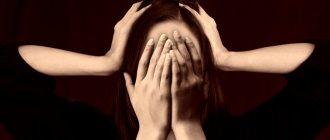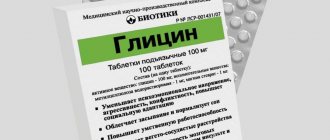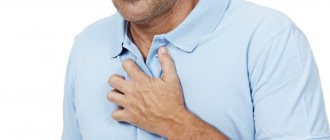Agitation is a condition in which the patient exhibits febrile motor agitation and demonstrates increased talkativeness.
The patient experiences anxiety, he fusses, does not find a place for himself, performs any actions automatically, and loses the ability to build logical chains. As a rule, agitation occurs against the background of a mental disorder. If the condition is not controlled, it can lead to the patient’s aggression, directed both at himself and at others.
Causes
Agitation can develop for a variety of reasons, including after severe stress. However, the most common cause is mental illness: schizophrenia, depression, neurosis, anxiety disorder. Agitation is also a frequent accompaniment of Alzheimer's disease and senile dementia.
Another group of reasons is drug intoxication, including that occurring during the treatment of mental disorders.
Agitation can occur with alcohol and drug poisoning.
Agitation in children most often manifests itself during recovery from general anesthesia.
How to get rid of nervous excitement
The state of increased nervous excitement must be treated unambiguously, otherwise it can lead to dire consequences. A person can kill himself or another, or cause injury.
If the situation is not too advanced and the patient understands his problem, try to take measures to reduce nervous excitability:
- Long, comfortable sleep. If you can’t sleep, you need to take sleeping pills for some time.
- Calm environment. Relatives and friends should support the patient at this moment and find the right words. You can’t scold him or create a tense environment. You cannot remind the victim of what is bothering him.
- Moderate physical activity, healthy lifestyle.
- Taking vitamins B, C, thiamine, choline and others. It's better to take a multivitamin complex.
- The absence of a computer and television negatively affects the psyche.
- You may need a break away from your usual environment.
- It will be very useful for the patient to do what he loves and have a good time.
Symptoms
The main symptoms of agitation are increased motor and speech activity of a non-constructive nature. A person repeatedly makes the same type of movements, shouts out the same phrases, without subjecting his actions to critical analysis.
Also, most patients experience:
- hand trembling;
- sweating;
- pale skin;
- cardiopalmus;
- labored breathing;
- increased blood pressure;
- hyperthermia;
- sleep disorders.
Agitation in depression is characterized by a rolling feeling of devastation after an attack. Episodes of hallucinations are occasionally observed.
Agitation in children: characteristic features
In children, agitation occurs during postoperative awakening from anesthesia. It manifests itself as uncontrollable agitation, inappropriate actions, and anxiety.
The child is aggressive towards the doctor and parents, does not give in to persuasion, is irritable, cries for a long time and inconsolably. The condition can last up to half an hour from the moment of regaining consciousness. Then the baby calms down on his own or with the help of medications.
The syndrome is observed in children aged from one to seven. Usually found in patients with prenatal and postnatal disorders, birth injuries.
Psychogenic (reactive) arousal
Psychogenic (reactive) arousal occurs, as a rule, immediately after acute mental trauma or life-threatening situations (catastrophe, wreck, earthquake and other extreme situations), and is expressed by motor restlessness of varying degrees with an abundance of expressive movements, striking effective and vegetative disorders.
The clinical picture is very diverse - from monotonous monotonous excitement with inarticulate sounds to pictures of chaotic senseless excitement with panicked flight, self-harm, and suicide. Often, excitement occurs with psychogenic delirium or is replaced by stupor. During mass disasters, psychogenic arousal through the mechanisms of mental induction can cover more or less large groups of people with the emergence of panic. Psychopathic arousal is close to psychogenic; it also occurs more often after exposure to external irritating factors, but the cause that caused it does not correspond to the strength of the response, which is associated with pathological (psychopathic) character traits of patients.
Diagnostics
The diagnosis is made by a psychiatrist; to clarify it, a consultation with a neurologist and narcologist may be required.
In addition to observing the patient’s behavior, the doctor measures pulse and blood pressure and collects family history. In some cases, the results of clinical and biochemical blood tests, measurement of hormone levels in the blood, urine analysis, and MRI of the brain may be required.
Blood tests are necessary to differentiate between agitation and akatasia, which are very similar in symptoms. Akatasia can occur as a result of taking medications (antidepressants and antipsychotics) that relieve agitation. An additional dose of these drugs can worsen the condition of a patient with akatasia.
Prevention
To prevent agitation and the conditions that cause it, psychologists and doctors recommend avoiding overwork and exhaustion. It is important to be attentive to your desires and needs, to respect the body’s reactions. If you feel tired, put everything aside for the day and rest.
You cannot feel sorry for yourself, suppress anxiety and disappointment in alcohol, drugs, and casual sexual relationships. Instead, think about what you need to do to fix what you are unhappy with. Look for resources within yourself, around you. Exercise and eat right. It clears thoughts and strengthens the nervous system.
Treatment
Depending on the severity of the symptoms, either a conversation is held with the patient, or an attack of agitation is stopped with medication, often in a hospital setting.
Treatment for the condition depends on the cause that caused it. Individual or group psychotherapy is indicated for patients who have suffered severe stress.
Patients need to create favorable conditions and adjust their sleep and wakefulness patterns. Relatives and friends of patients need to build trusting and supportive relationships with the patient.
What is bipolar disorder in simple terms?
Mood swings are common to every person. Often the patient himself, his friends and relatives associate changes in states with increased emotionality, enthusiasm, and a hysterical character.
The danger of the permissible norm for significant mood swings is associated with the development of the diagnosis. Both the patient himself and his immediate family too often do not suspect the presence of a serious illness, attributing it to a strange upbringing or eccentric character. Frequent changes in mood can be taken as normal. Patients with bipolar disorder themselves try to cope with unpleasant manifestations, mistaking them for fatigue or mood swings.
As symptoms increase, patients experience a significant deterioration in quality of life, patients lose the opportunity to continue professional activities, and children’s school performance decreases. A common outcome is the development of suicidal tendencies.
It is possible to assume the presence of this affective disorder based on the level of changes in the emotional state, often reaching extreme levels. The manic (euphoric) stage is characterized by a state close to agitation. The period of depression brings the patient to a complete loss of vitality. He is literally unable to simply get up in bed and carry out any daily activities. There is no strength or desire to maintain family ties, visit the workplace or go to school. Depressive disorder leads to a loss of interest in life itself, which often leads patients to commit suicide or cause physical harm to themselves.
The success of therapy depends on the correct diagnosis and choice of the type of treatment for bipolar disorder for each patient. The decisive factor for success is the acceptance of the presence of the disease by the patient himself and his relatives. Often, it is close people who are the first to contact a medical institution to determine the reasons for frequent mood swings and to exclude the connection between increased emotionality and severe mental pathology, which, as it develops, can destroy the patient’s personal and social life.
Drugs for the treatment of agitation
First and second generation antipsychotics and benzodiazepines are most often used in treatment.
Depending on the severity of the underlying disease, the drugs are taken orally or administered intramuscularly/intravenously.
To relieve an acute attack of agitation, the drug of choice is haloperidol, which is administered both in tablet form and intramuscularly. Olanzepine (Egolanza, Zolafren, Olfrex), sulpiride (Eglonil), and aripiprazole (Arilental, Frame, Zikalor) are also used.
Medicines to relieve agitation are used strictly as prescribed and under the supervision of a doctor!
List of used literature
- Gelder M., Goeth D., Mayo R. Oxford Manual of Psychiatry / Trans. from English: In 2 volumes - K.: Sfera, 1999. - T. 2
- Nitrutsa M.I., Nagnibeda A.N. Emergency psychiatric care at the prehospital stage. – St. Petersburg: Special literature, 1998–2000.
- Protsenko D.N. International recommendations for the treatment of agitation and delirium in adult patients in intensive care units // Medical alphabet. – 2014. – T. 2. – No. 9.
- Smulevich A.B. Psychopathology and clinical picture of depression developing in schizophrenia // Psychiatry and psychopharmacotherapy. – 2003. – No. 5.
Stage 3. Hug
Embracing is a stage of enjoying one’s peculiarity, active interaction with anxiety as a resource. This is both a vector inward (note that the diagram seems to be condensed towards the center), and at the same time outward, because it symbolizes creative adaptation, outward movement, the ability to share one’s energy.
Here you can look for your own ways to use the real energy of anxiety for personal purposes. When I personally feel anxious, and I am aware of it, my anxiety decreases significantly, but some of the energy remains
For this reason, I can start cleaning the apartment, sit down to write a new article, do a couple of important things that require energy that I still couldn’t get around to, do a daily fitness workout, make an action plan for solving an important task (in an anxious state of feeling and intellect seem to be sharpening, and personally I think faster and easier), etc. Look for your own ways - some of them may pleasantly surprise you: anxiety due to high energy can actually be a resource
Frequently asked questions about agitation
How to treat agitation?
The condition is treated with medications. Most often, the patient is hospitalized in a hospital. Subsequently, depending on what caused the agitation, the underlying disease is treated and a course of psychotherapy is prescribed, designed to stabilize the patient’s psychological state.
What can cause agitation?
The phenomenon develops against the background of mental illnesses - schizophrenia, depression, manic-depressive psychosis and anxiety disorders. The condition can also be caused by alcohol and drug intoxication, and drug poisoning. Agitation often accompanies senile dementia and Alzheimer's disease, and is observed in healthy people who have suffered severe stress.
Can agitation be cured?
This condition is not a disease. It can be described as a behavioral disorder that accompanies certain diseases. Their cure has a beneficial effect on the general condition of the patient. If agitation is caused by stress, psychotherapy, adherence to a daily routine, and a generally comfortable environment for the patient can cause an improvement in the condition without the use of medications.
Mixed depressive states in the clinic of bipolar affective disorder (BD), which represent the introduction of manic or hypomanic symptoms into the structure of a depressive episode, are still not well defined and cause difficulties in diagnosis [74]. This explains the wide range of data on the prevalence of this condition in bipolar disorder - from 0.2 to 70% depending on the criteria used (according to DSM criteria [71] from 0.2% to 50% in the presence of ≥3 manic symptoms [25-27] , 60% according to E. Kraepelin’s criteria [60], 70% according to the presence of individual manic symptoms in the structure of a depressive episode [23, 46]).
In the classical concept of E. Kraepelin [59, 60] and W. Weygandt [77], formulated more than 100 years ago, mixed states were divided into two poles depending on the dominant affect, and mixed depressions in manic-depressive psychosis were presented as two combinations of depressive mood with symptoms of the opposite pole in the sphere of motor skills or thinking - agitated depression and depression with racing ideas. In contrast, in the classifications of ICD-10 [78] and DSM-IV [18], mixed depressive states are not identified as a separate subgroup and criteria common to mixed states are given. Thus, according to DSM-IV, to diagnose a mixed episode, a combination of simultaneously present symptoms of a full-blown manic and depressive episode is required almost every day for at least 1 week. Thus, mixed states are meant only within the framework of bipolar disorder I. According to ICD-10, a mixed episode is defined as an affective episode lasting at least 2 weeks and characterized by either confusion or rapid alternation (which is absent in DSM-IV) of hypo-, manic and depressive symptoms. Patterns of symptoms should be significantly severe during most of the current episode, but may not reach syndromic levels. Thus, mixed states are considered not only within the framework of BAR I, but also within BAR II.
Official criteria for mixed conditions have proven to be of little use in research work. First, the simultaneous coexistence of symptoms of a full-blown syndromic depressive episode and a manic episode is rare, and studies most often use definitions of mixed depression that allow the combination of a depressive episode with manic or hypomanic symptoms at a subsyndromal level [11, 12, 15, 16, 27, 28, 31-33, 35, 36, 39, 41, 43, 44, 49, 55, 56, 63, 67, 68, 70, 73]. Secondly, most researchers, considering mixed conditions as relatively stable combinations of symptoms of opposite polarity, separate them from the rapid-cyclical course of bipolar disorder [21, 36, 62].
The most commonly used definitions of mixed depressive states are based on two approaches: clinical assessment of depressive and manic symptoms and indicators of psychometric instruments. The first, categorical approach is to determine a set of manic symptoms competing with depression and their minimum threshold number (≥2-3 symptoms are sufficient for diagnosis), allowing one to distinguish mixed states from pure affective episodes. The second, dimensional, approach focuses on measuring mania or hypomania on psychometric scales (eg, YMRS > 11, HIG > 8) [29, 73]. The dimensional approach makes it possible to more accurately assess the severity of symptoms and makes it possible to consider mixed conditions as a spectrum of countless combinations of depressive and manic symptoms (which is of great theoretical interest) [75]. The categorical definition of mixed conditions (based on the number of competing symptoms) turns out to be more convenient in clinical practice [45] and has practical significance. Despite the fundamental differences between these approaches, they assess the same symptoms, have comparable validity [29] and are not mutually exclusive.
Researchers attempting to find specific combinations of manic or hypomanic symptoms in mixed depression [10, 12, 29] most often describe them as a combination of a depressive episode within bipolar disorder II with two or three of the following competing manic symptoms: irritability, distractibility, ideation acceleration, increased talkativeness, psychomotor agitation, etc. Thus, H. Akiskal and O. Pinto [10] describe a combination of a full-blown depressive episode with hypomanic symptoms such as racing and influx of thoughts, sexual arousal, irritability, psychomotor agitation. A. Dayer et al. [43] consider dysphoria as a separate fundamental dimension in the structure of a mixed state.
F. Benazzi [31] describes three variants of mixed depression: with a feeling of internal tension (irritability) and ideational acceleration; a feeling of internal tension (irritability) and psychomotor agitation; ideational acceleration and agitation.
S. Strakowski [72] notes a higher level of impulsivity in a mixed state compared to euthymia in bipolar disorder. In the domestic literature on psychiatry, among mixed conditions classified as depressive type, based on the concept of the affective triad, two syndromic variants are identified: hyperdynamic and associative-accelerated depression [6]. Some authors point to the prognostic significance of individual symptoms in the structure of mixed depressive states. Thus, there is an opinion [20, 38, 56, 63, 65] that psychomotor agitation and acceleration of thoughts are a predictor of suicidality. Other researchers [8, 37] provide data on the role of basic temperament of the opposite direction in the formation of a mixed depressive episode - personal emotional lability and hyperthymic or cyclothymic temperament [14, 17], borderline personality disorder [40].
The developers of the new edition of DSM-V [19], presented by the American Psychiatric Association, trying to resolve the contradictions regarding mixed conditions (including mixed depression) accumulated over a period of more than 10 years (since the release of the previous edition of DSM), proposed a fundamentally new look at the problem under consideration. In the DSM-V, mixed depression is not identified as a separate variant of an affective episode within bipolar disorder and is considered only as an additional characteristic of a depressive episode, not only bi-, but also unipolar. The presence of three or more manic or hypomanic symptoms almost daily for the past 2 weeks during a major depressive episode is sufficient to qualify the depressive episode with mixed features. Competing symptoms in the DSM-V include the following: elevated or expansive mood, inflated self-esteem or grandiosity, unusual talkativeness or pressure of speech, racing ideas or a subjective feeling of faster thoughts, increased energy or goal-directed activity, involvement in activities with a high risk of adverse consequences, decreased need for sleep. As you can see, the list of counterpolar symptoms excludes those that can occur in both mania and depression: psychomotor agitation, irritability, insomnia (distinguished from a decreased need for sleep), increased distractibility and loss of appetite, i.e. the most commonly observed symptoms in mixed depression [46]. Such a desire to exclude the “overlap” of manic and depressive symptoms in mixed conditions contradicts their very definition and causes criticism from scientists who point out the weak scientific basis of the new classification, which leads to the inability to identify many mixed conditions according to the new criteria [58]. By limiting itself to listing possible competing manic/hypomanic symptoms, the DSM-V moves even further away from differentiating mixed depressive conditions according to their psychopathological structure than the previous edition. Moreover, DSM-V moves mixed conditions from an independent nosological category to the rank of auxiliary characteristics of affective episodes.
In the domestic literature on psychiatry, the issue of criteria and typology of mixed depressive states is even less developed. Modern domestic authors point to the existence of such conditions [2, 4, 5], but pay attention only to certain aspects of their clinical, psychopathological and pharmacotherapeutic characteristics: high prevalence [2], prognostic unfavorability [5], and low effectiveness of psychopharmacotherapy [4] .
Thus, an analysis of modern literature has shown the continued uncertainty of the category of mixed conditions and a tendency to expand its criteria, bordering on discrediting diagnostic independence. The few attempts to find specific combinations of symptoms in mixed depression to date have not yielded clinically important information. The priority in significance for diagnosis continues to be the number of competing (depressive and manic) symptoms, and not their qualitative side, i.e. content [31].
Meanwhile, the independent significance of mixed conditions is evidenced by a number of clinical data: association with suicidality [1, 5, 20], a tendency to earlier manifestation [1, 3, 5, 24] and a protracted course [4, 5, 66], the presence of bipolar family history of disorders [36]. Adequate diagnosis of mixed depression is necessary to select the correct therapeutic tactics. Thus, the use of antidepressants can lead to an increase in manic symptoms competing in the structure of a mixed depressive state [22, 34, 42, 57], while the use of mood stabilizers, on the contrary, often leads to improvement [4, 54].
The noted prognostic significance and characteristics of patients’ response to therapy, together with the high prevalence of mixed depression in the structure of bipolar disorder, necessitate further research in the development of their diagnostic criteria and typology.
The purpose of this study is a dimensional study of the psychopathological structure of mixed depressive states in bipolar disorder, constructing their clinical typology, assessing the role of temperament, and establishing the characteristics of the developmental stereotype.
Material and methods
At the stage of patient selection, 72 patients in a state of depression with a diagnosis of bipolar disorder (F31.x) verified according to ICD-10 from among inpatients who were treated at Moscow Psychiatric Hospital No. 12 in 2011-2013 were examined using a clinical-psychopathological method.
From among those examined, a sample of patients with a mixed depressive episode was formed, which met the following inclusion criteria: 1) compliance with the criteria of the rubric “BAD, current mixed episode” F31.6 according to ICD-10; 2) a clear predominance in the state of symptoms of the depressive pole with hypothymia; 3) more than 3 competing manic or hypomanic symptoms in the structure of a mixed depressive state (in accordance with the validated categorical criteria of F. Benazzi [23, 28]). The exclusion criteria were the following: identification of rapid alternation of manic and depressive symptoms according to the rapid-cyclic type (the independence of this category from mixed conditions was confirmed by G. Perugi et al. [66]); substance abuse; psychotic level of affective disorders.
The sample of patients with a mixed depressive episode included 23 people: 13 women, 10 men. They accounted for 32% of the total number of patients studied, which indicates the high prevalence of these conditions in the structure of bipolar disorder.
The compiled sample was distinguished by the predominance of young people and women. The latter is consistent with the results of other studies examining mixed conditions and indicating their higher prevalence among females [30]. The average age of the patients was 36.0±12.4 years. The main contingent was represented by socially prosperous people. The majority of patients (65.2%) had higher education; there were 26.1% of patients with specialized secondary education and 8.7% with secondary education. An analysis of marital status revealed a larger percentage of married people - 47.8% compared to singles - 21.7% and divorced - 30.4%. An assessment of labor activity showed a predominance of people with permanent jobs - 60.9% compared to the unemployed - 34.8% and a minimal representation of pensioners - 4.3%.
The premorbid properties of the patients’ temperament were correlated with the traits of the subtypes identified in the widely used classification of temperaments by H. Akiskal [7]: cyclothymic (characterized by emotional and behavioral instability), hyperthymic (sociability, energy, mental productivity), depressive (pessimism, skepticism, avoidance, dissatisfaction , sensitivity to criticism), irritable (temper, conflict, aggression), anxious (exaggerated fears, expectation of trouble).
The general clinical characteristics of the sample are presented in Table. 1
.
As can be seen from table. 1
, in 52% of the examined patients, according to the anamnesis, a certain type of premorbid affective temperament was verified. The dynamics of the disease in the sample were characterized by manifestation at a young age (28.7±8.4 years), which corresponds to data on an earlier onset of bipolar disorder with mixed episodes [12, 24, 68]. In addition, a tendency was found for mixed episodes to last longer (3.1±2.3 months) in comparison with manic (1.3±1.8 months) and depressive (2.1±2.7 months) phases, already noted in the literature earlier [66, 67, 77]. Mixed conditions were associated with greater severity of manic symptoms over the course of the disease. Despite the slightly shorter duration of manic episodes, the total number of manic or hypomanic and mixed episodes in the history prevailed over pure depressive phases (2.3 ± 2.5 and 3.1 ± 3 versus 2.0 ± 2.3, respectively). It was found that about half (47%) of the episodes are mixed. 74% of patients had ≥1 mixed episode in their history, which confirms the data on the “stability” of mixed states throughout the disease [69] and corresponds to the hypothesis of H. Akiskal [9] about the predisposition of some patients to mixed states associated with basic temperament. Patients included in the sample underwent clinical, psychopathological and psychometric examination using the 17-item Hamilton Depression Rating Scale (HAM-D-17) [47], the Young Mania Rating Scale (YMRS) [79], and the Multidimensional Affective States Scale for Bipolar Disorder (MAThyS). ), developed by C. Henry et al. [51, 53] and validated in a number of studies. The MAThyS scale is not designed to identify typical symptoms of mania or depression, but to quantitatively measure, regardless of the tone of affect, two main dimensions of the affective state: firstly, the degree of general activation/inhibition of the components of the affective state (relative to motor skills, ideational sphere, motivation, etc. .), secondly, increase/decrease in emotional reactivity (includes items regarding emotional lability and intensity of emotions, etc.). The use of the MAThyS scale is due to evidence that activation in combination with emotional hyperreactivity (an unusual increase in the intensity of emotions) are fundamental properties of mixed depressive states, allowing them to be differentiated from pure depression [48-50, 52, 64].
The results obtained on the HAM-D-17 and YMRS scales were used to assess the severity of manic and depressive symptoms in the structure of the condition. Indicators on the MAThyS scale were used to construct a clinical typology using statistical analysis of the results.
Data processing using statistical methods included two stages. At the first stage, factor analysis was carried out (using the method of principal components using varimax rotation and Kaiser normalization) in order to isolate from a large number of variables (items of the MAThyS scale) the most significant independent quantities (complex factors), combining the most correlated variables. At the second stage, a hierarchical cluster analysis was carried out: dividing the sample patients into groups based on the principle of commonality according to specified factors obtained at the first stage of statistical processing.
Results and discussion
The overall total scores on the MAThyS scale for all patients in the sample turned out to be >100 (average total score - 128.043±18.92, minimum - 107, maximum - 167), which corresponds to the phenomena of general activation characteristic of all mixed depressive states [48-50, 52 ].
The average total score on the HAM-D-17 depressive scale was 19.78±2.84 points, on the YMRS manic scale - 20.78±4.3 points, which reflects the predominance in the sample of mixed conditions with a subsyndromal level of competing manic symptoms.
After factor analysis, five factors were selected, according to which variables were distributed in accordance with the values of correlation coefficients - items of the MAThyS scale (Table 2)
.
Each factor was assigned a label in accordance with its clinical content (thus symptoms were grouped and correlated with individual components of the affective state) (Table 3)
.
The resulting factor model turned out to be non-identical, but very close to that proposed by C. Henry et al. [51] factor distribution. The “Emotional Sphere” factor, just like the author of the scale, included items characterizing the degree of emotional reactivity - affective lability, emotional control, sensitivity to external events, intensity of emotions. The average overall sample score for these four items was 32.5 ± 4, which corresponds to hyperreactivity [51]. Thus, the data obtained confirm the statement of C. Henry et al. [48-50, 52] that general activation and hyperreactivity are characteristic of mixed depressive states.
At the next stage, values for each factor were obtained for all patients in the sample and subjected to hierarchical cluster analysis. The procedure for distributing patients into clusters is presented in Table. 4
.
As can be seen from table. 4
, a sharp jump in the coefficient is observed at the fourth step of agglomeration, which means the optimality of the solution with three clusters, each of which unites patients with a similar symptomatological profile. Thus, statistical processing of the data made it possible to identify three groups of patients for further study of the clinical and psychopathological features of their condition with the subsequent development of a typology of mixed depression. In accordance with this, three variants of mixed depression were identified: agitated, with a race of ideas, and hyperreactive.
Summary data on the groups obtained in this way are presented in table. 5
And
6
.
Agitated depression
was observed in more than half of the patients - 12 (52%) patients, 6 women, 6 men, with the highest values for the factor “Psychomotor tension” and high average scores for the parameters “feeling of internal tension” (9.125±0.835), “acceleration of motor acts” (9.375±0.518), “need for communication” (8.654±0.621), which, apparently, can be explained by speech psychomotor agitation. Patients in this group most often complained of depression, melancholy, a persistent feeling of internal tension, and the inability to relax. Their mood often became dysphoric, with a readiness for explosive emotional reactions. In their judgments about themselves and their lives, patients expressed a pessimistic assessment of the current situation, self-deprecating thoughts, heavy forebodings, gloomy expectations of future events, and recalled missed opportunities, past grievances and their own mistakes. At the same time, the pace of their speech was normal, less often - somewhat accelerated. Autonomic manifestations were represented by sleep disturbances such as moderate insomnia and decreased appetite. The described symptoms were combined with severe motor restlessness, restlessness, fussiness, and often sexual excitability. Sometimes patients could not find a place for themselves, they tried to take up physical labor or play sports to relieve stress, but in any case the activity was unproductive. There was a tendency to impulsive actions, when patients suddenly left home, acted without taking into account the situation, and provoked conflicts. Rough affective outbursts towards relatives subsequently caused them to feel regret and were explained by a decrease in the ability to self-control. Although anxiety was not a mandatory symptom, some patients noted unmotivated anxiety or specific fears for the future in the form of anxious rumination. This clinical variant coincides with descriptions of depression with psychomotor activation [13, 32, 55-57] and can be compared with agitated depression according to E. Kraepelin.
The average total scores in this group on the HAM-D-17 (21.75±1.913), YMRS (23.92±1.62) scales were higher than in other groups, which reflects symptoms reaching syndromic severe depression and mania in the structure of a mixed state.
The presence of traits of certain subtypes of temperament in 42% of patients in this group (irritable and anxious - 17% each) indicates their participation in the development of the picture of agitated depression, at least in some cases. At the same time, the symptoms characteristic of agitated depression (impulsivity, irritability, anxiety) are amplified features of the basic temperament.
The manifestation of bipolar disorder among patients in this group began in middle age (34.7±9.2 years), most often with a full-blown depressive episode. Features of the course of the disease were the predominance of depressive phases in the anamnesis, the appearance of the first mixed episode at a later age (39.6 ± 6.8 years), and the recurrence of mixed states comparable in duration to depressive episodes (2.9 ± 1.7 months). The development of mixed depression in 4 cases was provoked by taking antidepressants. Impulsivity and irritability were associated with a higher risk of suicide (history of suicide attempts in 3 patients). Indicators of social adaptation turned out to depend on the degree of recurrence of mixed phases: in patients with repeated mixed episodes, social and family status was worse than with the first mixed episode.
Depression with a rush of ideas
was observed most rarely: in 5 (22%) patients, 2 women, 3 men, with the highest factor values for the factor “Ideational sphere” - ideational acceleration, and high average scores for symptoms such as “distraction of attention” (9.310±1.001) , “stream of thoughts” (9.120±0.453), “speed of thinking” (8.994±0.992), “decision making” (6.010±1.545). In addition, this group had relatively high scores on the “feeling of internal tension” variable (7.013±1.023), which is consistent with the research data of F. Benazzi [31] on the frequent combination of symptoms of ideational acceleration and internal tension. Patients in this group complained of depression, apathy, accompanied by a pronounced feeling of physical weakness, daytime sleepiness, fatigue, and motor retardation. Outwardly sad, imitative, inactive, they at the same time spoke at an accelerated pace, with pressure, were verbose, constantly jumped from one topic to another (“jump of ideas”), mentioned “influxes” of thoughts that “give no rest” neither at night nor during the day. As a rule, they are willing to implement the numerous ideas that came to them abundantly. Severe distractibility of attention made their speech inconsistent, confused, confused, and chaotic. Less often, the acceleration of associative processes was accompanied by an improvement in cognitive abilities and ease of decision-making, including radical ones, for example, about restructuring one’s own life. A penchant for ideas associated with risk often led such patients to become involved in dubious, adventurous activities designed for random success. Despite the pronounced asthenic symptoms, the majority of patients retained the usual increased level of desires (libido, appetite). A similar description of the psychopathological structure of such depressions is given by F. Benazzi [31]. H. Akiskal and F. Benazzi [13] note the comparability of this set of competing symptoms (ideational acceleration, distractibility, increased talkativeness) in the structure of mixed depression with Kraepelinian depression with a jump in ideas.
The average total scores in the second group on the HAM-D-17 (17.8±0.84), YMRS (14.4±1.14) scales indicated milder affective symptoms in comparison with other selected groups and corresponded to the combination in the structure mixed state of moderate depression with hypomania.
Premorbid features of the temperament of patients in this group made a significant contribution to the development of the picture of depression with ideational acceleration - 60% of patients premorbidly showed features of hyperthymic temperament: predominantly high mood, energy, allowing one to succeed simultaneously in different areas of life, enthusiasm, sociability, openness, ease in interpersonal relationships, self-confidence. “Hyperthymic depression,” which is similar in clinical picture and develops on the basis of a hyperthymic temperament, was described by H. Akiskal [7].
The onset of bipolar disorder in patients in this group is at a later age (39.1±8.3 years). The manifestation is, as a rule, a depressive phase, although the presence of a history of difficult to recognize hypomanic episodes cannot be excluded. A mixed depressive state with ideational acceleration in this case first develops at a later age (44.7±9.8 years). Only in some patients the disease began immediately with mixed depression with a race of ideas. The average duration of mixed episodes was shorter (2.1±0.8 months) than in the first group. Indicators of social adaptation in this group turned out to be the most favorable: the patients maintained their family and professional status at the initially high level even after several repeated mixed episodes.
Depression with symptoms of emotional hyperreactivity
was observed in 6 (26%) people, 5 women, 1 man, with high scores for the factors “Emotional hyperreactivity” and “Sensory sphere”, as well as average scores for such characteristics as “emotional control” (6.057±0.433), “ affective lability" (9.003±0.879), "sensitivity" (8.799±0.761), "intensity of emotions" (7.554±1.781). This group was distinguished by higher average scores on the MAThyS scale (153±10.23) and hyperreactivity scores (38.7±1.0) in comparison with the first and second groups (120.75±12.76, 114.8±5 .21 and 30.3±1.7, 30.4±1.1, respectively), which reflects the highest severity of hyperactivation phenomena in the structure of the mixed state.
The leading clinical picture in such patients was the manifestation of instability of all components of the affective state with a clear decrease in the threshold of response to external (even neutral) stimuli and exaggerated emotional reactions (with short-term but pronounced irritability, impulsivity, agitation, aggressiveness). Such reactions, which did not correspond to the real significance of the stimuli, reflected extreme vulnerability and dependence of patients on random influences. On the one hand, throughout the entire period of the condition, patients characterized their mood as depressed, calling it “depressive,” noting such typical symptoms as apathy, anhedonia, insomnia, and extreme physical exhaustion, forcing patients to spend hours passively in bed. On the other hand, during the day, spontaneously or under the influence of minor factors, a kaleidoscopic alternation of activation phenomena was observed in the spheres of motor, ideational and drives. Asynchronous activation in different areas appeared as chaotic instability in the behavior and complaints of patients: fleeting periods of motor restlessness, restlessness, desire for purposeful activity, combined with ideational and verbal activation, quickly turned into a feeling of exhaustion and weakness. Emotional lability, a reduced threshold for responding to external stimuli and increased intensity of emotions manifested themselves in significant mood swings during the day in the form of sudden bursts of meaningless motor activity, impatience, irritability with a dysphoric tinge, speech pressure, conflict, and various vegetative manifestations. Unmotivated periods of physical activity, accompanied by obsessiveness and unceremoniousness, were replaced by passivity and adynamia. Such mixed states are similar to “unstable mixed patterns” [62], “ultradian cyclicity” [61, 76] and “alternating mixed state” [1, 6].
Despite the fact that the average total scores on the HAM-D-17 (20.5±2.74) and YMRS (22.83±3.06) scales indicated affective symptoms comparable in severity to the first group (corresponding to a combination of severe depression with fluctuating but quite intense manic symptoms), the clinical manifestations of this variant were characterized by particular intensity and dramatic coloring of the patients’ subjective experiences.
Premorbid characteristics of patients were characterized by the greatest (67%) representation of individuals with a cyclothymic temperament, characterized by a tendency to rapid mood swings, instability of activity levels, instability of self-esteem and extreme intensity of emotional experiences [1], which confirms the observations of F. Benazzi [37] that emotional lability as a temperamental trait ensures the instability of the course of bipolar disorder and is a precursor of mixed states. Thus, the described option reflects the development of a mixed state through the introduction of temperamental traits into the depressive phase.
Features of the course of bipolar disorder in this variant of mixed depressive states is the onset in adolescence, which corresponds to data on the early manifestation of the disease due to emotional instability [1, 37]. The manifest phase was more often depressive with feelings of youthful failure. The average age of the first mixed phase was 24.8±4.7 years. The structure of the disease was clearly dominated by mixed phases, which were more protracted (3-4 months) in nature compared to the previous groups, without remissions, turning into full-blown manic episodes. At a later stage, there was a tendency towards a decrease in the frequency of mixed episodes and a predominance of developed pure depressive phases in the picture. During the phasic course, polar affective states were expressed. In a number of cases, affective fluctuations were phases passing into each other without clear boundaries, acquiring a continuous malignant course. The patients' adaptation was characterized by the worst social and professional prognosis and a high rate of re-hospitalization.
Thus, in this work it has been established that the dimensional assessment of mixed depressive states in the structure of bipolar disorder using psychometric scales and statistical methods makes it possible to distinguish three variants of mixed depression - agitated, with racing ideas and hyperreactive. The most common (52%) was the variant of agitated depression, the least common (22%) was depression with racing ideas. The identified variants of mixed states, the synergistic unity of which forms polar affective disorders, differed in the degree of severity of competing symptoms: agitated depression was characterized by a combination of severe depression with syndromic mania, depression with racing ideas - moderate depression with hypomanic symptoms, and hyperreactive depression - severe depression with manic symptoms of varying intensity, but invariably with a vivid and subjectively painful clinical picture for patients. The severity of the phenomena of activation and hyperreactivity, characteristic, according to S. Henry et al. [49], for mixed states, depression with a race of ideas, agitated depression, and hyperreactive depression increased in the order. The high importance of premorbid affective temperament in the formation of various variants of mixed disorders has been established. The greatest contribution to the picture of mixed hyperreactive depression is made by the cyclothymic temperament, while depression with a race of ideas is made by the hyperthymic temperament. The role of temperament in the occurrence of agitated depression turned out to be minimal. Some features of the patterns of the course of bipolar disorder were noted depending on the variant of mixed states. Thus, bipolar disorder, during which agitated depression is observed, is characterized by a manifestation in middle age, alternation of pure manic and clichéd mixed agitated depressions, and distinct periods of remission. Depression with a jump in ideas is associated with a later onset of bipolar disorder, which occurs with a predominance of hypomanic episodes over depressive ones, the formation of high quality remissions and social adaptation of patients. Hyperreactive depression is more often represented in early-onset bipolar disorder, with a tendency to a protracted and continuous (malignant) course of affective phases, the dynamics of which reflect the change from mixed states and manias (at the onset of the disease) to pure depression (at long-term stages), with pronounced social maladjustment of patients.








